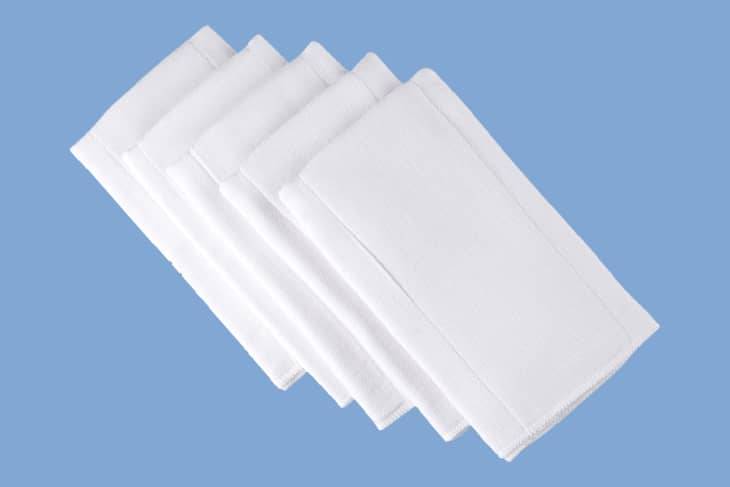Microfiber cloths are popular for a reason. Not only are they great at cleaning up everyday filth, they also don’t leave streaks or lint on glass, making them a useful cleaning multi-tool for kitchen and bathroom messes alike.
But microfiber has a dark side—microplastic shedding is “one of the most abundant sources of plastic pollution in the ocean,” as Nicholas Mallos, director of the Trash Free Seas Program at the Ocean Conservancy, told the American Association of Textile Chemists and Colorists .
Yep, that’s right: Microfiber cloth is actually made from plastic . “Natural gas is used to create plastics that are spun into fibers and weaved into a cloth that has really great properties for doing things like picking up dust and dirt,” says Shelie Miller , an associate professor in the School for Environment and Sustainability at the University of Michigan. Every time you wash them, some plastic fibers are released into your wastewater and, even with water treatment facilities’ best efforts to filter them out, some microplastics from home wash loads will eventually make their way out to rivers and oceans .
Read more: Are Microfiber Towels Really Better for the Environment? on Kitchn
If you’re ready to say goodbye to microfiber, don’t fret. You can switch up your cleaning routine with a more natural, eco-friendly—and maybe even more effective—choice. Carolyn Forté, a director at The Good Housekeeping Institute, may have come up with the perfect solution, as she told HuffPost : natural cotton cloth diaper inserts.

Here’s why you should make the switch to diapers (yes, diapers!):
They can be more absorbent
While microfiber is touted for its versatility, it can lose absorbency after a few washes (especially if you’re using fabric softener), which means you’ll end up spending more money in the long run replacing your microfiber cloths. Instead, try a 100 percent cotton diaper insert, which is just as soft and versatile. Given their intended purpose, it makes sense that cloth diapers would be ultra-absorbent and strong, especially when you’re dealing with water-based cleaners or other liquid messes.
Pro tip: the inner panel of the diaper will typically be about twice as absorbent as the outer edges, because you know, babies.
They’re often larger
On top of their natural absorbing power, cloth diaper inserts will also be a few times larger (not to mention stronger) than most microfiber cloths, so you can get more mileage out of them. You can also fold the cloth diaper inserts to make them even more robust—or clean a totally separate mess without cross-contaminating.
They’re easy to wash
Cloth diapers are also super easy to wash. Many bloggers and cleaning experts recommend washing microfiber cloths separately, or even hand-washing them to prevent lint or compromised fibers, which will inevitably add time and hassle to your cleaning routine. Not so with diapers. If you’re not using them for their intended (poopy) purpose, no worries about throwing your cloth inserts straight in the wash with your other items! Just don’t be alarmed: After the first wash, the diaper is meant to shrink down a bit.
They’re more cost-effective
Cloth diapers might look expensive on first glance: A quality five-pack runs around $13 , while you can pay around the same amount for 24 small microfiber cloths . But the trade-off will probably be worth it. Because cloth diapers will last a lot longer than your average microfiber cloth due to their size and strength, you’ll likely end up saving money in the long haul.
If you want to reap the benefits of your new favorite cleaning tool, just make sure you choose a fully cotton diaper like this one , since some cloth diapers are made from microfiber, too. It’s a small switch we can make for a better (and cleaner!) tomorrow.